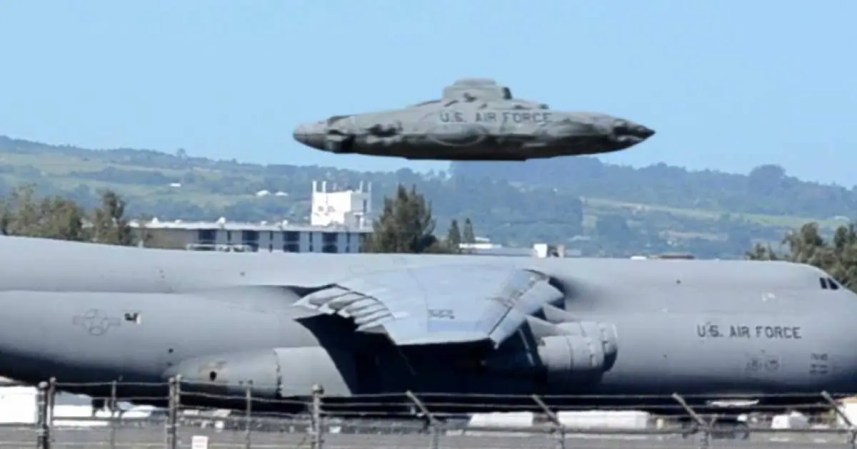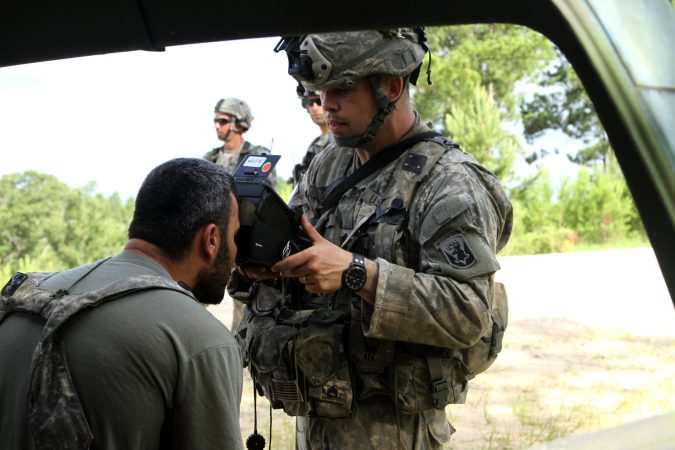Control of the electromagnetic (EM) spectrum is a major asset in military operations.
The Marines have demonstrated their painful “heat ray,” a weapon that blasts intruders with a wave beam that targets the skin and makes victims feel like they’ve stepped in front of a blazing oven — all without killing them.
It doesn’t cause irreversible damage, but will make someone instinctively back off.
Modern weapons systems employ radio, radar, infrared, optical, ultraviolet, electro-optical, and laser technologies.
“The Russians and the Chinese have designed specific electronic warfare platforms to go after all our high-value assets,” said Lieutenant General Herbert Carlisle, the Air Force’s Deputy Chief of Staff for Operations, as reported by Aviation Week.
The US military is developing cyber-capabilities to gain a tactical edge.
Electronic warfare consists of three subdivisions: electronic attack, electronic protection, and electronic warfare support.
According to US military doctrine for electronic warfare planning, electronic attack (EA) involves “the use of electromagnetic energy, directed energy or anti-radiation weapons to attack personnel, facilities, or equipment with the intent of degrading, neutralizing, or destroying enemy combat capability.”
Basically, the aim is to wipe out the enemy without getting too dirty.
The Marine Corps “Heat Ray” raises the temperature on the target’s skin by 130 degrees

But it won’t kill you.
The Active Denial System (ADS) creates an intense heated sensation lasting 1-2 seconds. It’s caused by a radio frequency wave, not radiation or microwave.
“You’re not going to see it, you’re not going to hear it, you’re not going to smell it. You’re going to feel it,” said director of the Joint Non-Lethal Weapons Directorate, Marine Col. Tracy Tafolla, according to Stars and Stripes.
The 95 GHz millimeter wave has a range of up to 1000 meters. The directed-energy beam only penetrates 1/64th of an inch into the skin.
As a nonlethal weapon, it can be used for crowd control or determining hostile intent before engaging with lethal weapons. That way, ADS can buy life-saving time without inflicting lethal injury on its targets.
This hand-held laser system can temporary blind you

The Phasr was introduced in 2005 by the Air Force.
As another directed-energy weapon, the Phasr employs a two-wavelength laser system that temporarily blocks an aggressor’s ability to see.
It’s like opening your eyes in the middle of the night to someone shoving a blinding flashlight in your face. The Air Force casually calls this effect “dazzling” or “illuminating.” Whatever you call it, this hand-held device effectively impairs anyone targeted.
The “Death Ray” can detect and destroy missiles with a deadly laser beam

The US has run several test flight experiments on the Airborne Laser Test Bed (ALTB). So far, they’ve worked out this killer firing sequence:
1. The ALTB uses one of its six infrared sensors to detect the exhaust plume of a boosting missile.
2. A kilowatt-class solid state laser, the Track Illuminator, tracks the missile and determines a precise aim point.
3. The Beacon Illuminator, a second laser, then measures disturbances in the atmosphere, which are corrected by the adaptive optics system to accurately point and focus the High Energy Laser (HEL) at its target.
4. Using a large telescope located in the nose turret, the beam control/fire control system focuses the HEL beam onto a pressurized area of the missile, holding it there until laser energy compromises the missile’s structural integrity causing it to fail.
Radar jamming takes out the enemy’s ability to communicate

You may have heard of the Navy’s Next Generation Jammer program (NGJ).
Radar jamming can disable the enemy’s command and control system ahead of an offensive attack. NGJ will be used on the Boeing EA-18G, the aircraft for airborne electronic attack operations.
Another example of electromagnetic jamming is Counter-RCIEDs (Radio Controlled Improvised Explosive Device). You can see the Marine Corps’ Chameleon system here.
Military Deception manipulates the enemy’s combat decisions and generally messes with their heads

Troops can mislead enemy decision-makers about their intentions, prompting the enemy to take specific actions or inactions and making it difficult for the enemy to establish an accurate perception of reality.
Using the EM spectrum, they can disrupt communication and intelligence systems to insert deceptive information.
Military Deception (MILDEC) operations apply four basic deception techniques: feints, demonstrations, ruses, and display.
The anti-radiation missile is a smokeless, rocket-propelled missile that destroys radar-equipped defense systems

The AGM-88 HARM (High-speed anti-radiation missile) is used throughout the Air Force for suppressing surface-to-air radar warning systems.
Anti-radiation missiles help neutralize hostile airspace and take out the enemy’s ability to defend itself.
As Air Force officials have noted, “Coalition forces in Operation Desert Storm operated ‘at will’ over Iraq and Kuwait after gaining control of the EM spectrum early in the war.”
Boeing has test-flown a nonlethal missile that fries electronics while minimizing collateral damage (like civilian deaths). You can read about CHAMP here.
Expendables are active decoys that throw enemy missiles off target or seductively lure them away

The AN/ALE-55 fibre-optic decoy is towed behind to protect fighters, bombers, and transport aircraft from radio frequency-related threats, such as an incoming missile’s tracking on the aircraft.
There are three layers of protection though, so the idea is that a target track is eliminated from the start.
If all else fails, the intelligent decoy will lure the missile away to become the target and deny the enemy a hit.
More from Business Insider:
- Check out these new helicopters that will change 68 years of vertical flight
- ANavy officer just pleaded guilty to trading classified info for ‘the services of a prostitute’
- Hamas is using heavy machinery to accelerate the construction of ‘attack tunnels’ in Gaza
- Julius Caesar may have suffered from a series of mini-strokes
- Egypt and Saudi Arabia are considering holding ‘large-scale’ military maneuvers over Yemen
This article originally appeared at Business Insider Defense Copyright 2015. Follow BI Defense on Twitter.










